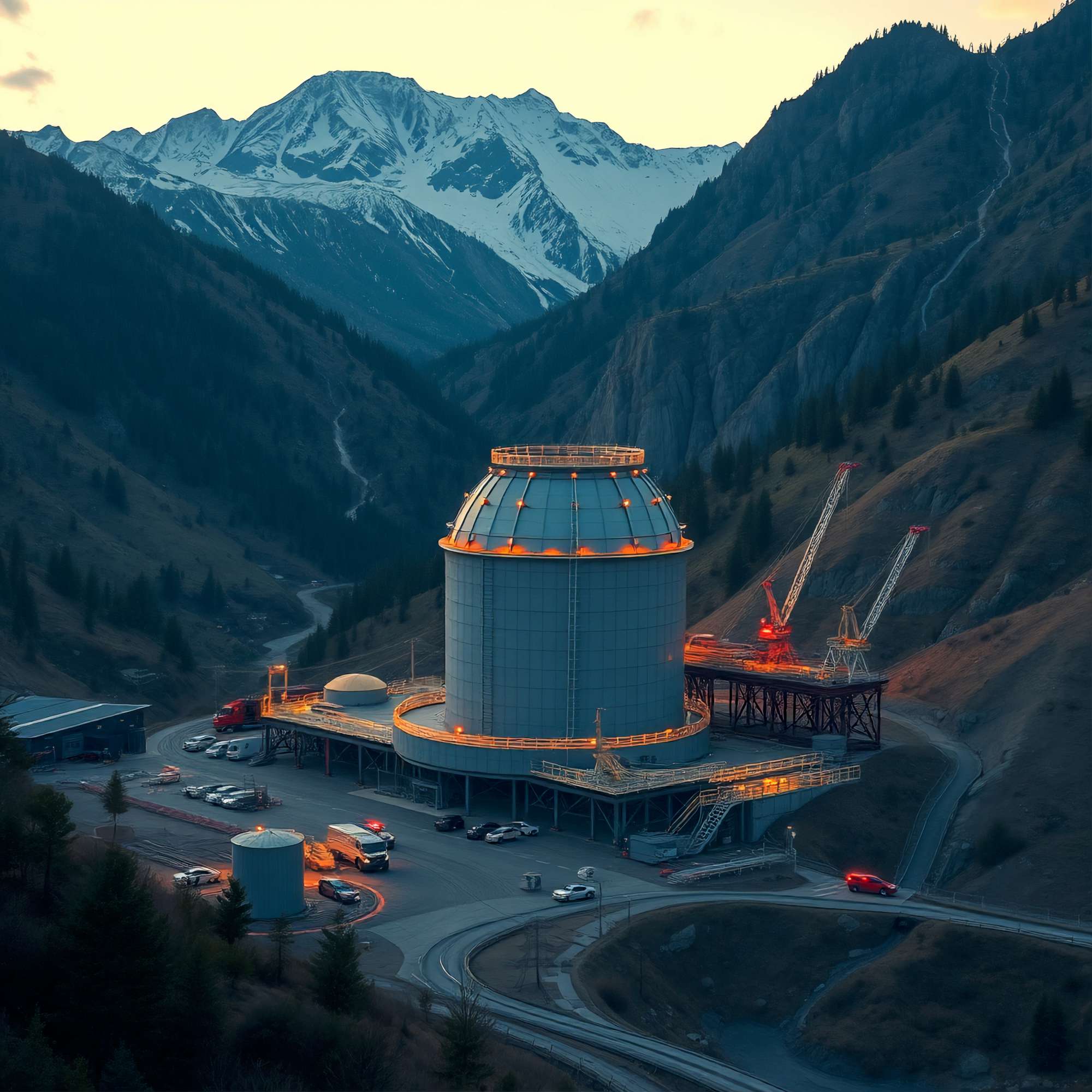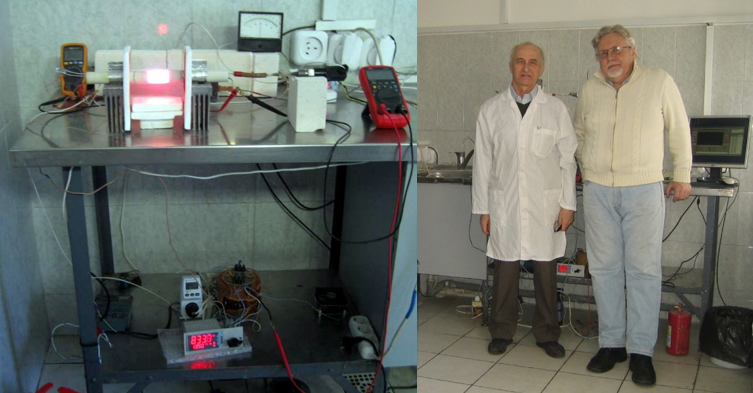

Achievements obtained by Dr. Alexandrov, Canada
Experiments were successfully carried out by Dr. D. Alexandrov thanks to his initial research in the field of fusion level energy and electrical power generation, the results of which were partially published. The experimental scheme consists of a gas chamber where the samples of a preheated constantan wire are placed and where the interaction of these samples with injected deuterium gas takes place and as results of the interaction both energy and helium gas are released. The released energy causes increase of both the temperature and the brightness of the constantan wire and an appearance of a glow in the reactor chamber. Fig. 1 shows the view of the constantan wire and of the chamber before the constantan – injected deuterium interaction, and Fig. 2 shows this view after the beginning of the interaction. The replicable experiments were carried out by Dr. D. Alexandrov at initial temperatures of the constantan wire in the interval T = 660°C – 950°C, as the increase of the temperature of the constantan with an additional ~400°C occurs for the corresponding time interval from 30 seconds to under 1 second, the density of the generated power in the constantan is in the interval 105 W /g – 2280 W/g, and the <Output power>/ <Input power> ratio is in the range ~4 – 16 (and greater). No radiation (gamma rays and neutrons) was recorded in the experiments. The energy release has been shown to be non-electrical and non-chemical. Despite the absence of radiation, it can be proven on the basis of the existing establishment in physics that the energy release is the result of nuclear fusion level reaction in the constantan wire. The estimated fusion level energy generation (“Solid Stellar Effect-SSC” ) is based on observed experimental results, i.e.: i) In terms of the nuclear fusion level energy generated per 1 kg of molecular deuterium: 2.65*10^14 J/kg or 7.35*10^7 kWh/kg; ii) In terms of nuclear fusion level energy generated per volume of 1 cubic meter of molecular deuterium at STP: 4.76*10^13 J/m^3 or 1.32*10^7 kWh/m^3 .
Achievements obtained by Dr. Godin & Dr. Kudriashov
15 years ago Andrea Rossi demonstrated a device the size of a small suitcase, producing 10 kW of heat while consuming only a few hundred watts of electricity. What was known about this device was that it heated nickel powder in a hydrogen atmosphere in the presence of a secret catalyst. At the same time, Russian scientists from Moscow Yu.N.Bazhutov and A.G.Parhomov were conducting their experiments in Moscow, at the Kurchatov Institute of Atomic Energy. They studied nickel powder and the LaNi5 alloy, which absorbed hydrogen well. A mixture of hydrogen isotopes – protium and deuterium in various proportions – was used for hydrogenation.

A.G.Parhomov near the SSE setup in Kurchatov Institute of Atomic Energy.

In the photo is a “Solid Stellar Energy”(SSE) reactor that has worked for 7 months. S. Godin and A. Parkhomov in Parkhomov’ s laboratory. It can be confirmed that the measurements were made correctly.
Among the many reactors tested during this time, the M7 reactor stands out, having operated continuously for 225 days from October 10, 2017 to May 23, 2018, with a heat release power in excess of the consumed electrical energy from 200 to 1000 W (COP up to 3.6). The temperature inside the reactor reached 1800 °C. The design and operation of this reactor are described in detail in the article. Hydrogen-saturated nickel powder weighing 1.2 g was used as fuel in the reactor. During operation, there was a gradual decrease in excess heat release. Apparently, this was due to the depletion of the fuel’s energy resource, which made it possible to experimentally estimate the maximum possible energy release in reactors of this type. The total production of excess energy is about 4100 MJ. 2.1 MeV of energy was released per 1 nickel atom – millions of times more than is possible in the process of chemical reactions.
